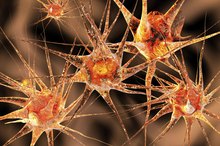What does fact checked mean?
At Healthfully, we strive to deliver objective content that is accurate and up-to-date. Our team periodically reviews articles in order to ensure content quality. The sources cited below consist of evidence from peer-reviewed journals, prominent medical organizations, academic associations, and government data.
- MedlinePlus Medical Encyclopedia; "Vitamins"; Alison Evert, et al.; Feb 2011
- Centers For Disease Control And Prevention; "Vitamins And Minerals"; Feb 2011
- Harvard School Of Public Health: "Fats and Cholesterol: Out with the Bad, In with the Good"
The information contained on this site is for informational purposes only, and should not be used as a substitute for the advice of a professional health care provider. Please check with the appropriate physician regarding health questions and concerns. Although we strive to deliver accurate and up-to-date information, no guarantee to that effect is made.
5 Classifications of Nutrients
Most of the nutrients in foods belong to one of five classifications: the macronutrients, which are proteins, carbohydrates and fats, or the micronutrients, which are vitamins and minerals. These and water provide you with most of your daily nourishment.
Protein
Protein is an energy source, but its primary functions are to build and repair the tissues of the body and to help fight infection. The body only uses protein for energy if you consume more than your body needs to perform the other two functions. Protein food sources include:
- meat
- poultry
- seafood
- eggs
- dairy
- nuts
- legumes
Proteins are made of amino acids, of which only 20 exist in nature.
Carbohydrates
6 Categories of Nutrition
Learn More
Carbohydrates provide most of your energy, with 4 calories per gram. Carbohydrates are formed by chains of sugar, or glucose, and are classified as simple or complex,depending on how long these chains are. Complex carbohydrate foods include breads, whole grains, rice, cereals, pasta and starches such as:
- potatoes
- corn
Whole-grain carbohydrates are also sources of dietary fiber.
Fats
Fats provide the body its most concentrated source of energy, at 9 calories per gram. Any fat the body doesn't burn for immediate energy, it stores for later use. Fats help the body absorb fat-soluble vitamins from the diet, including vitamins A, E, D and K. Food sources of fats include:
- oils
- margarine
- shortening
- salad dressings
Animals products, including meat and dairy, also contain fats. There are three types of fats: unsaturated, saturated and transfats. Unsaturated fats can provide several health benefits, including improving cholesterol levels. However, saturated fats elevate LDL, or "bad" cholesterol, levels. According to the Harvard School of Public Health, the body can produce all the saturated fat we need, so we don't really need any from our diet. Transfats form when vegetable oils are heated to the point of hardening; these are found mostly in fried and processed foods. They are the unhealthiest of the three types of fat because they not only raise LDL levels but lower HDL or "good" cholesterol levels as well.
- Fats provide the body its most concentrated source of energy, at 9 calories per gram.
- Fats help the body absorb fat-soluble vitamins from the diet, including vitamins A, E, D and K. Food sources of fats include: * oils
* margarine
* shortening
* salad dressings Animals products, including meat and dairy, also contain fats.
Vitamins
6 Major Nutrients
Learn More
Vitamins are compounds your body needs for proper growth and development. According to the National Institutes of Health, the body requires 13 different vitamins, most of which must come from the diet. Different vitamins can be found in varying proportions in most natural foods. Fruits and vegetables in particular are high in vitamins. Different vitamins are associated with different health effects. For example, vitamin A helps keep eyes, skin and mucus membranes healthy and promotes growth; vitamin C helps the body absorb iron and resist infection; and vitamin D helps the body absorb calcium and build strong teeth and bones.
- Vitamins are compounds your body needs for proper growth and development.
- According to the National Institutes of Health, the body requires 13 different vitamins, most of which must come from the diet.
Minerals
Like vitamins, different minerals are associated with different health benefits 1. For example, calcium and phosphorous help build strong bones, and magnesium helps the body utilize energy from proteins, fats and carbohydrates. What distinguishes minerals from vitamins is that minerals cannot be made by living organisms such as plants; instead, they come from non-living sources such as the soil, rocks and water. In fact, the plants that make vitamins draw the minerals they need for their life processes from the soil. Other minerals important for the human diet include:
- potassium
- iron
- copper
- zinc
- iodine
- manganese
Food sources of minerals vary widely, depending on the mineral.
- Like vitamins, different minerals are associated with different health benefits 1.
- What distinguishes minerals from vitamins is that minerals cannot be made by living organisms such as plants; instead, they come from non-living sources such as the soil, rocks and water.
Related Articles
References
- MedlinePlus Medical Encyclopedia; "Vitamins"; Alison Evert, et al.; Feb 2011
- Chen Y, Michalak M, Agellon LB. Importance of Nutrients and Nutrient Metabolism on Human Health. Yale J Biol Med. 2018;91(2):95-103.
- Lovegrove A, Edwards CH, De noni I, et al. Role of polysaccharides in food, digestion, and health. Crit Rev Food Sci Nutr. 2017;57(2):237-253. doi:10.1080/10408398.2014.939263
- University of Utah Health. How Sugar Converts to Fats. April 22, 2018.
- Journel M, Chaumontet C, Darcel N, Fromentin G, Tomé D. Brain responses to high-protein diets. Adv Nutr. 2012;3(3):322-9. doi:10.3945/an.112.002071
- Watson H. Biological membranes. Essays Biochem. 2015;59:43-69. doi:
- Motamed S, Ebrahimi M, Safarian M, et al. Micronutrient intake and the presence of the metabolic syndrome. N Am J Med Sci. 2013;5(6):377-85. doi:10.4103/1947-2714.114171
- Roohani N, Hurrell R, Kelishadi R, Schulin R. Zinc and its importance for human health: An integrative review. J Res Med Sci. 2013;18(2):144-57.
- Cashman KD. Calcium and vitamin D. Novartis Found Symp. 2007;282:123-38.
- American Academy of Orthopedic Surgeons. Calcium, Nutrition, and Bone Health.
- University of California San Francisco Health. Hemoglobin and Functions of Iron.
- Liu RH. Health-promoting components of fruits and vegetables in the diet. Adv Nutr. 2013;4(3):384S-92S. doi:10.3945/an.112.003517
- Mlcek J, Jurikova T, Skrovankova S, Sochor J. Quercetin and Its Anti-Allergic Immune Response. Molecules. 2016;21(5). doi:10.3390/molecules21050623
- Griffiths K, Aggarwal BB, Singh RB, Buttar HS, Wilson D, De meester F. Food Antioxidants and Their Anti-Inflammatory Properties: A Potential Role in Cardiovascular Diseases and Cancer Prevention. Diseases. 2016;4(3). doi:10.3390/diseases4030028
- Harvard Health Publishing. Should you get your nutrients from food or from supplements?. May 2015.
- U.S. Food and Drug Administration. What You Need to Know about Dietary Supplements.
- Academy of Nutritionists and Dietetics. Support Your Health With Nutrition. Reviewed March 2020.
- Chang CY, Ke DS, Chen JY. Essential fatty acids and human brain. Acta Neurol Taiwan. 2009;18(4):231-41.
- Gropper SS, Smith JL, Groff JL. Advanced Nutrition and Human Metabolism. Sixth Edition. Belmont, California: Wadsworth Publishing Company; 2013.
- National Institutes on Health. Vitamin C. February 27, 2020.
- Smolin LA, Grosvenor, MB. Nutrition: Science and Applications. Third Edition. Hoboken, New Jersey: Wiley Publishing Company; 2012.
Writer Bio
Based in Maine, Sage Kalmus has written extensively on fitness, nutrition, alternative health, self-improvement and green living for various websites. He also authored the metaphysical fiction book, "Free Will Flux." Kalmus holds a Bachelor of Science from Boston University's College of Communication and is a Certified Holistic Health Counselor with special training in Touch-For-Health Kinesiology.









